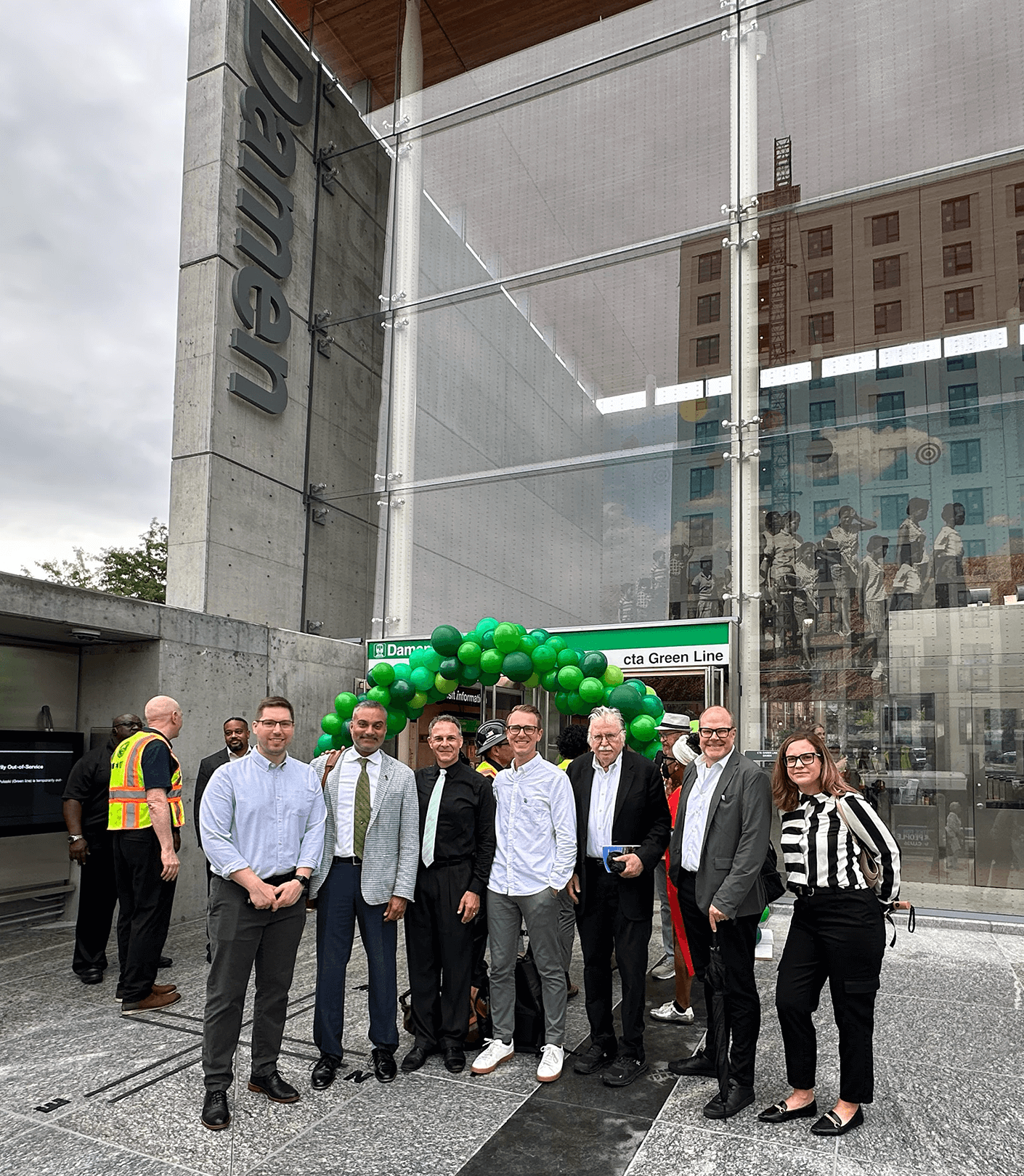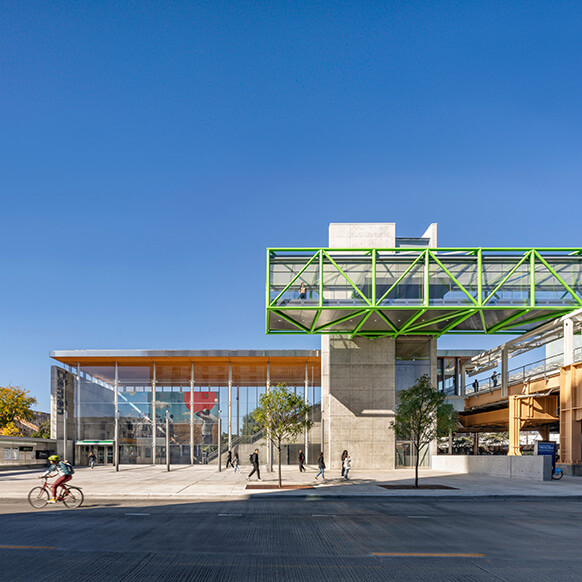The Damen Green Line Station brings accessible train access back to a Chicago neighborhood last served in 1948, and will spur community-supportive reinvestment and redevelopment on the West Side. The new “L” station, with its green steel trusses paying homage to Chicago’s iconic bridges, elevated glass towers, and a grand staircase, is the latest in our award-winning portfolio of planning and design for over 120 transit stations globally, from British Columbia, Canada to Chongqing City, China.
The station serves the Kinzie Industrial Corridor, the United Center, Malcolm X College, and surrounding residential areas on the growing Near West Side, and is adjacent to a newly-announced $7 billion mixed-used redevelopment project around the United Center.
“This long-awaited CTA station is a transformative achievement for Chicago’s Near West Side,” said Chicago Mayor Brandon Johnson at the official opening. “This visually stunning new station will enhance affordable and convenient transportation options for residents and help attract future investments that will make Chicago’s West Side a vibrant hub of residential, retail, entertainment, and public spaces.”
The station is aligned with Chicago’s Connected Communities Ordinance to advance equitable transit-oriented development, and comes amidst growing evidence nationally of the economic, social, and cultural vitality that modern infrastructure brings to communities.
Tracing its roots back over 125 years, the Green Line of the CTA is one of Chicago’s most historic transit lines. The original Damen Station, pivotal in 1893 for the World’s Fair, was a crucial transit hub that was eventually closed and demolished in 1948.
The multi-modal station puts the ease of the passenger experience at the core of its design, allowing visitors to seamlessly connect with buses, or to use bikes or walk to nearby destinations. A grand stair and escalator, visible through the transparent glass facade, guide passengers to the platform level. A glass bridge connects the inbound and outbound train platforms, offering spectacular views of the Chicago skyline and orienting visitors to neighborhood destinations and attractions.


